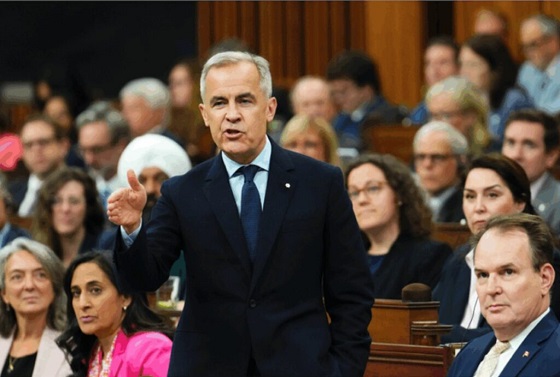Environment
Climate Alarmists Want To Fight The Sun. What Could Possibly Go Wrong?

 From the Daily Caller News Foundation
From the Daily Caller News Foundation
What should we say when one of America’s pre-eminent media platforms endorses a plan so fraught with unknowns and pitfalls it invites potential global catastrophe?
That’s what the editorial board at the Washington Post did on April 27 in a 1,000-word editorial endorsing plans by radical schemers and billionaires to engage in various efforts at geoengineering.
The Post’s editors engage in an exercise of saying the quiet part out loud in the piece, morphing from referring to monkeying around with the world’s ability to absorb sunlight as “a forbidden subject,” to concluding it is “indispensable” and “urgent” in the course of a single opinion piece. Sure, why not? What could possibly go wrong with such a plan?
What could go wrong with plans to, say, block sunlight with thousands of high-altitude balloons? Or with a plan that involves spraying the upper atmosphere with billions of tons of sulfur particles? Or with a plan to spend trillions of debt-funded dollars to build a gargantuan shield placed in stationary orbit in outer space?
The editors are so cocksure in their arrogance that they even admit some such concepts have already been tried out, writing, “Climate geoengineering is so cheap and potentially game-changing that even private entrepreneurs have tried it out, albeit at small scales.”
The “small scale” experiment to which the editors refer took place in Baja, Mexico, where researchers launched two large balloons filled with sulfur dioxide particles into the stratosphere. The goal was to measure the sun-dimming effects of the sulfur dioxide, a real, actual pollutant that the Environmental Protection Agency and regulators all over the world have spent the last half century attempting to remove from the atmosphere.
It turned out that Luke Eisman, an entrepreneur who financed the experiment, launched the balloons without seeking prior approval. When Mexican officials found out it had been conducted, they quickly moved to ban such geo-engineering projects on the grounds that they violate national sovereignty. Reuters reports that Mexico’s environment ministry statement said it would seek a global moratorium on such geoengineering projects under the Convention on Biological Diversity.
But despite such concerns in Mexico, here come the Post’s editors advocating we simply just have to trust the science. You know, like we trusted the “science” of COVID vaccines and the “science” of locating giant offshore wind farms in the middle of a whale migration corridor off the Northeast coast, right? Sure. After all, what could go wrong?
The editorial writers go on to cite a similar, larger scale project being promoted by climate-engineering scholars David Keith at the University of Chicago and Wake Smith at Yale. These gentlemen propose to try to lower temperatures by spewing out 100,000 tons of sulfur dioxide – again, a real pollutant humanity has worked decades to eliminate – at an annual cost of $500 million (no doubt to be paid for by more taxpayer debt) using what they refer to as “15 souped-up Gulfstream jets” to create what could accurately be called chemtrails.
In a piece published in February at the MIT Technology Review, the scientists say the project could be mounted as soon as five years from now, which we should all probably consider a threat rather than a mere projection.
Talk of mounting similar geoengineering projects has been ramping up in recent years. In 2021, Bill Gates said he was investing in a project based at Harvard University to spray tons of calcium carbonate particles into the stratosphere above Scandinavia, but the project was ultimately cancelled due to understandable outrage from indigenous groups and environmentalists.
Fellow billionaires Jeff Bezos and Facebook co-founder Dustin Moskovitz have also plowed millions into bioengineering projects.
But until recently, the thought of mounting projects designed to block out sunlight was, like the agenda to intentionally reduce the global population, a subset of their agenda that climate alarmists have tried to keep mainly under wraps. The reason is obvious: Whenever such radical and frankly dangerous ideas are made public, people tend to look at one another and ask, “who in the world would want to do that?”
Now come the members of the Washington Post editorial board, joining Gates and Bezos and Moskovitz in answering that question. Way to go, folks.
David Blackmon is an energy writer and consultant based in Texas. He spent 40 years in the oil and gas business, where he specialized in public policy and communications.
Automotive
Politicians should be honest about environmental pros and cons of electric vehicles

From the Fraser Institute
By Annika Segelhorst and Elmira Aliakbari
According to Steven Guilbeault, former environment minister under Justin Trudeau and former member of Prime Minister Carney’s cabinet, “Switching to an electric vehicle is one of the most impactful things Canadians can do to help fight climate change.”
And the Carney government has only paused Trudeau’s electric vehicle (EV) sales mandate to conduct a “review” of the policy, despite industry pressure to scrap the policy altogether.
So clearly, according to policymakers in Ottawa, EVs are essentially “zero emission” and thus good for environment.
But is that true?
Clearly, EVs have some environmental advantages over traditional gasoline-powered vehicles. Unlike cars with engines that directly burn fossil fuels, EVs do not produce tailpipe emissions of pollutants such as nitrogen dioxide and carbon monoxide, and do not release greenhouse gases (GHGs) such as carbon dioxide. These benefits are real. But when you consider the entire lifecycle of an EV, the picture becomes much more complicated.
Unlike traditional gasoline-powered vehicles, battery-powered EVs and plug-in hybrids generate most of their GHG emissions before the vehicles roll off the assembly line. Compared with conventional gas-powered cars, EVs typically require more fossil fuel energy to manufacture, largely because to produce EVs batteries, producers require a variety of mined materials including cobalt, graphite, lithium, manganese and nickel, which all take lots of energy to extract and process. Once these raw materials are mined, processed and transported across often vast distances to manufacturing sites, they must be assembled into battery packs. Consequently, the manufacturing process of an EV—from the initial mining of materials to final assembly—produces twice the quantity of GHGs (on average) as the manufacturing process for a comparable gas-powered car.
Once an EV is on the road, its carbon footprint depends on how the electricity used to charge its battery is generated. According to a report from the Canada Energy Regulator (the federal agency responsible for overseeing oil, gas and electric utilities), in British Columbia, Manitoba, Quebec and Ontario, electricity is largely produced from low- or even zero-carbon sources such as hydro, so EVs in these provinces have a low level of “indirect” emissions.
However, in other provinces—particularly Alberta, Saskatchewan and Nova Scotia—electricity generation is more heavily reliant on fossil fuels such as coal and natural gas, so EVs produce much higher indirect emissions. And according to research from the University of Toronto, in coal-dependent U.S. states such as West Virginia, an EV can emit about 6 per cent more GHG emissions over its entire lifetime—from initial mining, manufacturing and charging to eventual disposal—than a gas-powered vehicle of the same size. This means that in regions with especially coal-dependent energy grids, EVs could impose more climate costs than benefits. Put simply, for an EV to help meaningfully reduce emissions while on the road, its electricity must come from low-carbon electricity sources—something that does not happen in certain areas of Canada and the United States.
Finally, even after an EV is off the road, it continues to produce emissions, mainly because of the battery. EV batteries contain components that are energy-intensive to extract but also notoriously challenging to recycle. While EV battery recycling technologies are still emerging, approximately 5 per cent of lithium-ion batteries, which are commonly used in EVs, are actually recycled worldwide. This means that most new EVs feature batteries with no recycled components—further weakening the environmental benefit of EVs.
So what’s the final analysis? The technology continues to evolve and therefore the calculations will continue to change. But right now, while electric vehicles clearly help reduce tailpipe emissions, they’re not necessarily “zero emission” vehicles. And after you consider the full lifecycle—manufacturing, charging, scrapping—a more accurate picture of their environmental impact comes into view.
Agriculture
Canada’s air quality among the best in the world

From the Fraser Institute
By Annika Segelhorst and Elmira Aliakbari
Canadians care about the environment and breathing clean air. In 2023, the share of Canadians concerned about the state of outdoor air quality was 7 in 10, according to survey results from Abacus Data. Yet Canada outperforms most comparable high-income countries on air quality, suggesting a gap between public perception and empirical reality. Overall, Canada ranks 8th for air quality among 31 high-income countries, according to our recent study published by the Fraser Institute.
A key determinant of air quality is the presence of tiny solid particles and liquid droplets floating in the air, known as particulates. The smallest of these particles, known as fine particulate matter, are especially hazardous, as they can penetrate deep into a person’s lungs, enter the blood stream and harm our health.
Exposure to fine particulate matter stems from both natural and human sources. Natural events such as wildfires, dust storms and volcanic eruptions can release particles into the air that can travel thousands of kilometres. Other sources of particulate pollution originate from human activities such as the combustion of fossil fuels in automobiles and during industrial processes.
The World Health Organization (WHO) and the Canadian Council of Ministers of the Environment (CCME) publish air quality guidelines related to health, which we used to measure and rank 31 high-income countries on air quality.
Using data from 2022 (the latest year of consistently available data), our study assessed air quality based on three measures related to particulate pollution: (1) average exposure, (2) share of the population at risk, and (3) estimated health impacts.
The first measure, average exposure, reflects the average level of outdoor particle pollution people are exposed to over a year. Among 31 high-income countries, Canadians had the 5th-lowest average exposure to particulate pollution.
Next, the study considered the proportion of each country’s population that experienced an annual average level of fine particle pollution greater than the WHO’s air quality guideline. Only 2 per cent of Canadians were exposed to fine particle pollution levels exceeding the WHO guideline for annual exposure, ranking 9th of 31 countries. In other words, 98 per cent of Canadians were not exposed to fine particulate pollution levels exceeding health guidelines.
Finally, the study reviewed estimates of illness and mortality associated with fine particle pollution in each country. Canada had the fifth-lowest estimated death and illness burden due to fine particle pollution.
Taken together, the results show that Canada stands out as a global leader on clean air, ranking 8th overall for air quality among high-income countries.
Canada’s record underscores both the progress made in achieving cleaner air and the quality of life our clean air supports.
-

 Crime3 hours ago
Crime3 hours agoBrown University shooter dead of apparent self-inflicted gunshot wound
-

 Business2 days ago
Business2 days agoOttawa Pretends To Pivot But Keeps Spending Like Trudeau
-

 Business14 hours ago
Business14 hours agoCanada Hits the Brakes on Population
-

 Crime1 day ago
Crime1 day agoBondi Beach Survivor Says Cops Prevented Her From Fighting Back Against Terrorists
-

 International1 day ago
International1 day agoHouse Rejects Bipartisan Attempt To Block Trump From Using Military Force Against Venezuela
-

 Energy2 days ago
Energy2 days agoLiberals Twisted Themselves Into Pretzels Over Their Own Pipeline MOU
-

 Frontier Centre for Public Policy17 hours ago
Frontier Centre for Public Policy17 hours agoCanada Lets Child-Porn Offenders Off Easy While Targeting Bible Believers
-

 Censorship Industrial Complex2 days ago
Censorship Industrial Complex2 days agoHow Wikipedia Got Captured: Leftist Editors & Foreign Influence On Internet’s Biggest Source of Info











